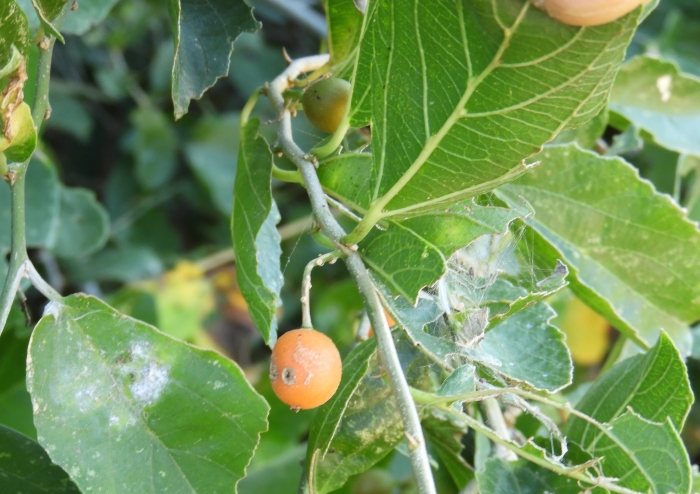Iguana Hackberry
(Celtis iguanaea)
Iguana Hackberry (Celtis iguanaea)
/
/

Francisco Farriols Sarabia
CC BY 4.0

















Estimated Native Range
Summary
Iguana Hackberry is valued for its hardiness and adaptability to various environmental conditions, making it suitable for urban planting, as a shade tree, and for reforestation projects. It is also used in traditional medicine and its wood is utilized for carpentry. This species thrives in full sun to part shade and requires moderate to high amounts of water, with a preference for well-drained soils. It is tolerant of drought once established and can handle a variety of soil types, including those with limestone or poor fertility. While generally pest-free, it can occasionally suffer from leaf spot diseases.CC BY-SA 4.0
Plant Description
- Plant Type: Tree
- Height: 20-30 feet
- Width: 20-40 feet
- Growth Rate: Moderate
- Flower Color: N/A
- Flowering Season: Spring
- Leaf Retention: Deciduous
Growth Requirements
- Sun: Full Sun, Part Shade
- Water: Medium
- Drainage: Medium, Fast
Common Uses
Bee Garden, Bird Garden, Butterfly Garden, Deer Resistant, Drought Tolerant, Edible*Disclaimer: Easyscape's listed plant edibility is for informational use. Always verify the safety and proper identification of any plant before consumption., Erosion Control, Hummingbird Garden, Salt Tolerant
Natural Habitat
native to tropical dry forests, coastal woodlands, and limestone outcrops in Mexico, the Caribbean, Central America, and northern South America
Other Names
Common Names: Sugarberry, Grão De Galo, Gumbixava, Cipó Farinha Seca, Cipó Laranjinha, Azufaifo, Cockspur
Scientific Names: , Momisia iguanaea, Celtis iguanaea, Celtis spinosa, Celtis pubescens, Celtis triflora, Celtis aculeata, Celtis spinosissima, Celtis glycycarpa, Celtis berlandieri
GBIF Accepted Name: Celtis iguanaea (Jacq.) Sarg.